Lenovo's Yoga Book is still a great tablet — and it still has issues
The Lenovo Yoga Book is a fantastic Windows 10 tablet, but it launched with some significant issues. Several months later, we looked back to see if those problems were fixed.
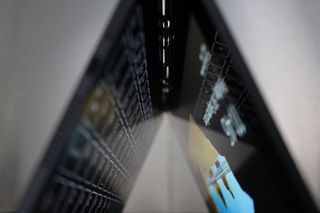
In my original review of the Lenovo Yoga Book, I called it one of my favorite Windows 10 tablets ever. It's a sleek, ultra-thin, incredibly light and beautiful 10.1-inch device that I simply adore, if only because of its futuristic "Halo Keyboard" that makes you feel like you're in an episode of Black Mirror.
But the Yoga Book wasn't without issues, as I noted in my review several months ago. Things such as sleep issues, oddities with the trackpad and being unable to change certain settings made for a frustrating experience. So, several months later, have things improved?
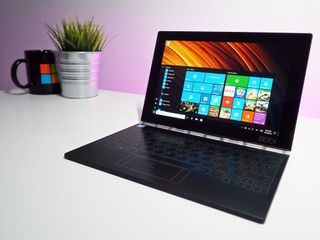
A look back
I've been using the Lenovo Yoga Book continuously since I reviewed it. I use it almost daily for light web browsing and email. It's worth noting that I have installed the latest drivers, and even reinstalled Windows entirely since that review, just to make sure I'm getting the very latest available drivers.
Oddly, the dedicated program that checks for updated drivers doesn't work. It just errors out when attempting to look and download the newest drivers. This is super annoying, and it means I have to manually download and install all the drivers from Lenovo's confusing website. After about an hour, I recently had all the drivers installed and ready to go, so what changed?
One of the early issues I encountered with the Yoga Book was that it didn't automatically switch to tablet mode when switched into a tablet. Most other Windows 10 2-in-1s give you the option to automatically switch modes once the tablet has changed position, but that isn't the case with the Yoga Book. I was hoping that the latest driver updates would fix this, but they haven't. The Yoga Book still won't automatically switch to tablet mode when turned into a tablet, and it's extremely annoying.
So instead, I have to manually enable Tablet Mode by swiping out the Action Center and hitting the dedicated Tablet Mode button. It's not the end of the world, but it's something that definitely gets to you when using the tablet constantly. Considering it's a tablet first and foremost, this is a feature the Yoga Book should have.

Moving onto the second issue I had, which was related to how the device went to sleep and woke up. In my original review, I noted that sometimes the tablet would go to sleep and never come back on, causing me to have to hard reboot the device once every five or so times I closed the lid. I'm happy to say this has been fixed with the latest drivers.
Get the Windows Central Newsletter
All the latest news, reviews, and guides for Windows and Xbox diehards.
No longer do I encounter any sleeping issues with the Yoga Book, In fact, I actually think it wakes up quicker than before. Simply closing and opening the lid causes no issues with power, and that's excellent.
Up next is the Halo Keyboard, which I still love dearly. I know many people think typing on a flat surface is just terrible, but I really like it. Regardless of how cool and amazing it looks, I did have some issues with it at first.
The keyboard noise that gets output from the speakers when typing was unable to keep up with my typing speeds. That has not been fixed, meaning unless you turn that audio noise off via the oddly-located Halo Keyboard settings app (it's in Control Panel), the audio noise is disrupting and disorientating because it plays only on certain key hits and it simply can't keep up.
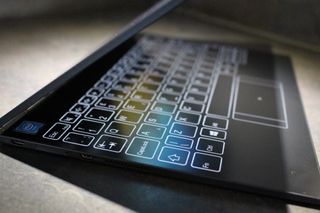
There's also the more personal preference of having the positions of the FN and CTRL keys switched on the keyboard. Most Lenovo laptops allow to you switch the key functions in the BIOS, but the Yoga Book doesn't.
Finally, there's the trackpad. I had several issues with the trackpad in my original review, including issues with how the trackpad disabled itself when typing, where the left and right click buttons are located, and how you couldn't double tap to drag. One of these issues has been fixed, which I'm incredibly grateful for.
The fixed issue is the double-tap-to-drag one. You don't realize it, but double-tap-to-drag is a thing you likely do on your trackpad more often than you'd think, and having it missing from a trackpad makes using Windows so much more painful. The latest driver updates have added this functionality, which is great.
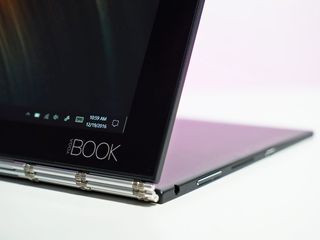
What isn't great is how the trackpad still requires me to place my finger directly in the middle of the trackpad before it reactivates after typing. This is a "feature" that I wish Lenovo would let me disable, but it does not. Basically, what this does is completely disable the trackpad when typing to prevent from accidental swipes, a good idea on paper. But Lenovo has made it so the trackpad won't reactivate at all, even if you're deliberately trying to use it, until you place your finger directly in the middle of it on a super small dot. It's incredibly annoying.
Finally, the left and right click buttons are located to the left and right of the trackpad, rather than at the bottom. Originally, this was super difficult to get used to. What's more, I also noticed that with the latest driver updates, Lenovo made it so the bottom of the trackpad also functions like a left and right click, much like on a traditional trackpad. This is a great change and one I'm grateful for.
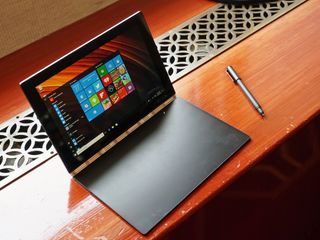
So there you have it, that's my revisited look at the Lenovo Yoga Book. Is it still one of my favorite Windows 10 tablets? Absolutely. It's still incredibly thin and sexy, and that Halo Keyboard is just a stunner. Plus, with the upcoming Creators Update the Create Pad is going to have even more things to play with, including 3D Paint and more.

